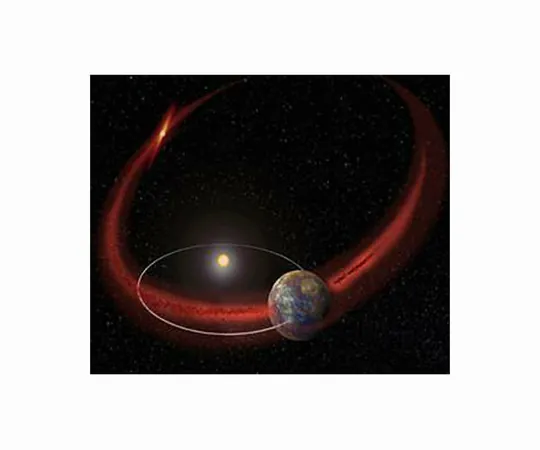
Is the Taurid Meteor Shower Hiding a Hidden Threat from Space?
2024-11-17
Author: Nur
As the stunning Taurid meteor shower lights up the sky above us, it’s easy to get lost in the beauty of shooting stars and the excitement of potential fireballs. However, beneath this celestial spectacle lies a chilling question: Are we at risk from larger space debris lurking in the Taurid stream?
The Taurid meteor shower, associated with the Comet Encke, has captivated stargazers worldwide, particularly as the full moon wanes, allowing for clearer views of the night sky. Astronomers suggest that the ideal time to witness this natural wonder is right before moonrise. But as we celebrate this astronomical event, scientists remain vigilant about the possibility that bigger chunks could be hidden among the meteors—icy boulders that may pose a genuine threat to our planet.
The Amazing Comet Encke
Comet Encke, roughly 3 miles in diameter, is responsible for the Taurid meteors. As it orbits the sun every 3.3 years, it sheds dust and debris into space. These particles, when they enter Earth's atmosphere, create dazzling streaks of light known as meteors. However, the concern among researchers is that Encke also releases larger fragments, which could potentially cause catastrophic effects upon impact.
Pseudoscience vs. Scientific Reality
The notion that significant threats could arise from the Taurid meteor stream has fueled numerous pseudoscientific theories. Some fringe theorists assert that catastrophic swarms of large meteors have collided with Earth throughout history, leading to mass extinctions and severe climate upheavals. For instance, they argue that a catastrophic event occurred around 12,900 years ago, devastating life and altering ecosystems. However, mainstream scientists dispel these theories, citing a lack of substantial evidence to support such grand claims.
The Tunguska Effect
One of the most notable historical incidents linked to potential meteor impacts is the Tunguska event of 1908. An explosion in Siberia flattened millions of trees and is believed to have resulted from an object 50 meters in diameter entering Earth's atmosphere. Interestingly, some researchers suspect that this object could be connected to the Taurid meteor stream, given the timing and trajectory of the event.
The possibility of unseen, yet sizeable fragments within the Taurid stream poses a genuine concern for planetary defense. As the stream approaches Earth every November and June, scientists warn that medium-sized objects could lead to airbursts like Tunguska, with the potential to obliterate urban areas and inflict significant casualties.
The Future of the Taurids
Looking ahead, the Taurid stream is expected to be closer to Earth in 2032 and 2036 than it has been since 1975. This raises the stakes for astronomers and planetary defenders who will need to keep a watchful eye out for potential threats. Enhanced detection efforts can help identify and track these objects, ensuring that we are better prepared to mitigate risks.
While it may be tempting to indulge in dramatic doomsday scenarios, the essential point remains clear: understanding the nature of the Taurid stream and the potential for larger cosmic objects is crucial for our safety. It’s not just about enjoying the mesmerizing display of shooting stars; it’s about remaining vigilant and aware of the greater forces at play in our universe.
Stay tuned as scientists delve deeper into this mystery, exploring whether the Taurid meteor shower conceals a greater risk than previously realized, and what that could mean for our future on this planet.


 Brasil (PT)
Brasil (PT)
 Canada (EN)
Canada (EN)
 Chile (ES)
Chile (ES)
 España (ES)
España (ES)
 France (FR)
France (FR)
 Hong Kong (EN)
Hong Kong (EN)
 Italia (IT)
Italia (IT)
 日本 (JA)
日本 (JA)
 Magyarország (HU)
Magyarország (HU)
 Norge (NO)
Norge (NO)
 Polska (PL)
Polska (PL)
 Schweiz (DE)
Schweiz (DE)
 Singapore (EN)
Singapore (EN)
 Sverige (SV)
Sverige (SV)
 Suomi (FI)
Suomi (FI)
 Türkiye (TR)
Türkiye (TR)